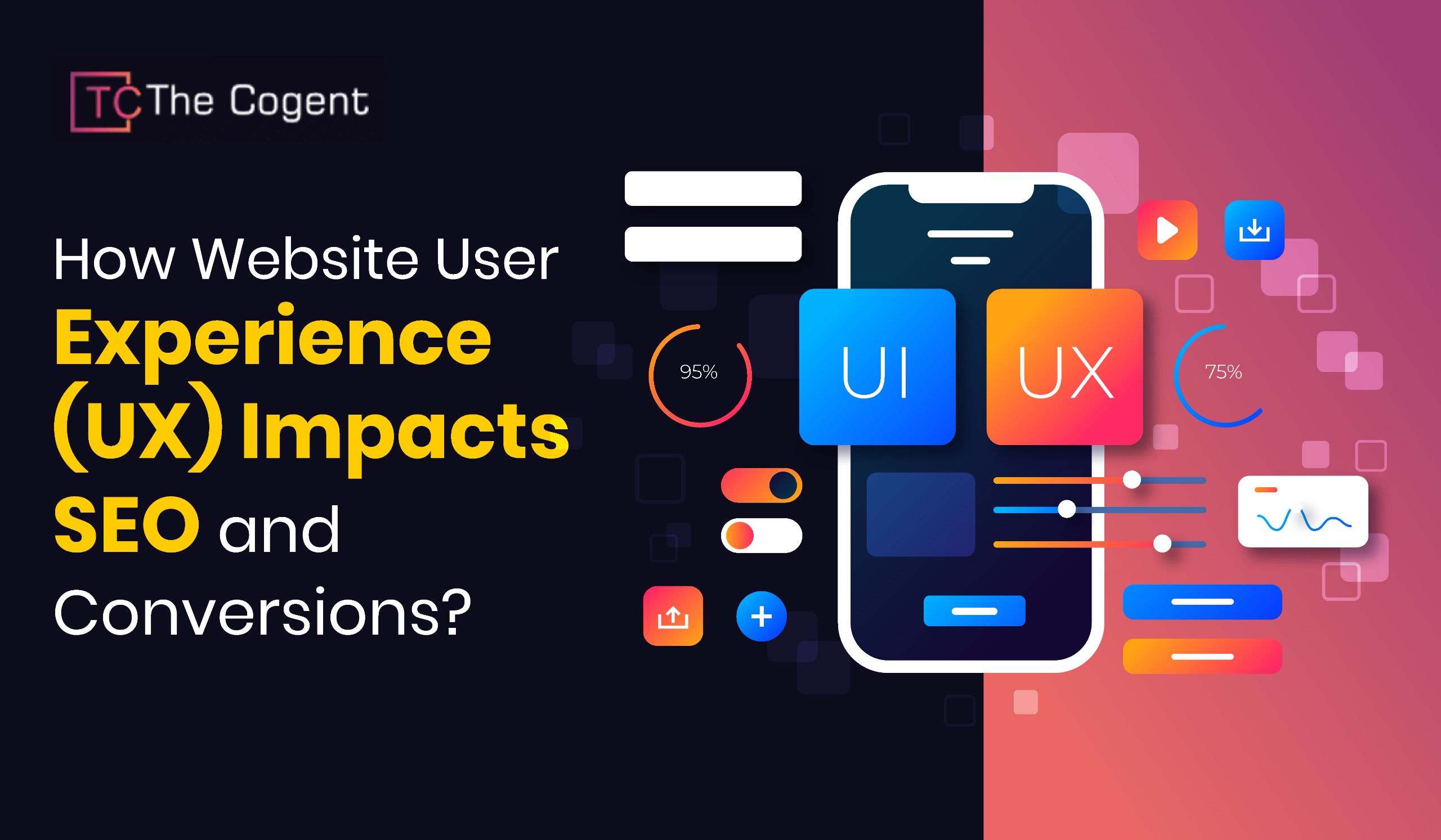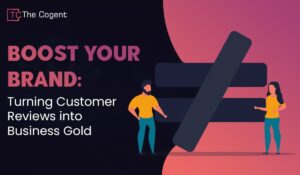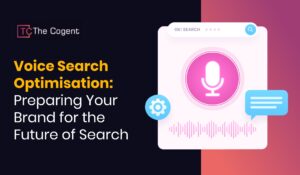Did you realise that more than 90 per cent of web traffic users will abandon a website after one or two seconds if the site is slow or difficult to navigate? This is true nowadays; people are too impatient to spend their time on a slow site or one with confusing designs. When your site loads slowly or it seems disorganised, then there is a possibility that the user will not even visit the site in the first place.
Here is the collaboration of User Experience (UX) and Search Engine Optimisation (SEO). Good UX makes the users happy, and this makes Google know that your site is valuable. This results in improved rankings, increased traffic and finally, increased sales.
Search engines are smarter in 2025. They compensate for user-friendly websites, mobile-friendly, and user-friendly. When your site satisfies these boxes, then there is a chance that it will be ranked higher in the search results. The Cogent is a leading SEO company in Jaipur that assists brands in balancing the power of the UX design with the power of search engine optimisation to convert visitors into regular customers. We shall see how this strong connection operates.
What is User Experience (UX)?
User Experience, or UX, is simply about the way an individual feels when using your site. It is not only about good design but also about ensuring that the visitor finds what they want without difficulty and finds it pleasant to use your site.
Main Components of UX:
- Website design and navigation: The ease of navigation.
- Design and aesthetics: The general appearance and feel of your pages.
- Readability of content: The simplicity and clarity of your content.
- Mobile responsiveness: The effectiveness of your site on phones and tablets.
- Speed of loading and interactivity: How fast the pages load and how easy it is to use.
Good UX does not merely concern the beauty; it is also about simplicity, comfort, and clarity. When your visitors like using your site, they will take more time and browse more and place their confidence in your brand.
The Relationship Between UX and SEO
The two concepts, UX and SEO, are the same. The better one of them, the better the other one will be.
-
User-Centric Algorithms of Google
Google is now concerned with user satisfaction. It utilises such metrics as Core Web Vitals —
- LCP (Largest Contentful Paint): The speed of your first page.
- FID (First Input Delay): The speed at which the site reacts.
- CLS (Cumulative Layout Shift): The measure of the layout stability during the loading process.
In case your site is quick, reliable, and convenient, Google believes that your site can be trusted and ranked higher.
-
Less Bounced and Increased Dwells
A properly designed site retains users. The longer the user uses your pages, the better it is as far as Google is concerned with your useful content. As an illustration, easy menus and easy navigation will ensure that the visitors navigate through several pages of your site, enhancing your ranking in search engines.
-
Mobile-Friendliness
Over 70 per cent of online traffic is through mobile devices. Your site should not be incompatible with phones because you lose a considerable portion of your audience. A responsive design enhances the user experience and will increase your search engine traffic.
-
Site Speed & Performance
Nobody likes a slow website. Any delay of a few seconds will send users away. Performance measurement and fix identification can be done with the help of such tools as Google PageSpeed Insights and Lighthouse. A speedy site enhances the search engine optimisation as well as customer confidence.
-
Accessibility & Usability
Your site must be user-friendly to all, and even those who use assistive technologies to access it. With the feature of using the alt text, ARIA labels, and voice search compatibility, your site will be more inclusive, which is not only beneficial to the user but also SEO.
How UX Impacts Conversions and Leads
An excellent user experience not only results in traffic, but it also transforms visitors into paying customers.
-
Hint-free Navigation = Purchase Easier
Menus are clear, and there are well-placed buttons that guide the user. When consumers are able to locate what they desire easily, they tend to purchase or make a move.
-
Reduced Page Loads = Better Drop-offs
Research indicates that conversions can decrease by 7 per cent even with a delay of 1 second. Quick loading pages ensure that people are held on and do not leave at an early stage.
-
Credible Designs and Logo
Monochrome, font, and style create credibility. By making your site professional and clean, the users will not hesitate to provide their details or make a purchase.
-
Clear CTAs (Call-to-Actions)
Such buttons as Get a Free SEO Audit or Book a Consultation are the most effective when they are put clearly and naturally. They also inform the users on what to do next, enhancing conversion rates.
-
Readability and Hierarchy of the Content
Your content is easy to follow as a result of the use of simple language, brief paragraphs and clear headings. This increases the length of time the user spends reading, and this is useful in SEO and minimising bounce rate.
Key UX Elements That Boost SEO
The following minor, yet effective design decisions can significantly enhance your SEO:
- Responsive Design – Works across the board.
- Clean Navigation – Let users and search engines navigate freely on your site.
- Engaging Visuals with Alt Text – Makes your site easier to use and makes it fast.
- Internal Linking – Leads customers to the other pages and improves the structure of the site.
- Interactive Features – It can be interactive through live chat or a hover effect.
- Minimal Pop-ups – Do not have excessive pop-up advertisements, which would irritate customers and negatively affect search optimisation.
Tools to Measure and Improve UX for SEO
Need to know whether your site is easy to use? These tools can help:
- Google PageSpeed Insights: Measures loading speed and Core Web Vitals.
- Hotjar / Microsoft Clarity: Displays heatmaps of user clicks or scrolls.
- Google Analytics: Monitors the bounce rate, the duration of a session, and the performance of a page.
- Crazy Egg: Tracks the interaction of your users.
- The Cogent UX Audit Framework: This is a tailored service that examines UX and SEO to identify improvement areas.
Common UX Mistakes That Hurt SEO and Conversions
The following errors can help you avoid traffic and sales losses:
- Long loading time and images that are not optimised.
- Obfuscated or buried navigation menu.
- Excessive glitzy design features are distracting to users.
- Mobile-breaking non-responsive layouts.
- Difficult to read (small fonts, lack of contrast).
- Too much or too many annoying pop-ups or intrusive advertising.
How The Cogent Can Help You Build a UX-Optimised, SEO-Driven Website
At The Cogent, design and SEO are inseparable. A website must not just be aesthetically pleasing, but also have to be high ranking in search.
Our Approach
- Full UX and SEO Audits: We analyse user behaviour on your site and identify problems that negatively impact performance.
- Empowered by Analytics and User Behaviour: All design choices are supported by analytics and user behaviour.
- Speed and Mobile Optimisation Services: We make sure that your site loads fast and appears flawless on all devices.
- Conversion Rate Optimisation (CRO): We streamline your funnel to increase sign-ups, leads, and sales.
- Continuous Improvement: UX is not a one-time activity; we watch, test, and continue to improve.
Why Partner with The Cogent
- Tried and tested status as a prominent digital marketing and search engine optimisation agency in Jaipur.
- A thorough understanding of the collaboration of UX, SEO, and analytics.
- Personalised plans to enhance your presence, traffic, and customer satisfaction.
A good website does not just bring people to its site but turns them into its visitors.
Collaborate with The Cogent, a leading digital marketing company in Jaipur, to produce a site that will both please the visitors and take over the search engines.
When UX Meets SEO, Conversions Soar
User experience and SEO make wonderful things. Users like your website, spend longer on your website and become loyal to your brand. Search engines monitor this, and your site gets a higher ranking.
Unless you desire your online business to flourish, it is time to consider doing more than designing, but also how your users feel on your site.
It might be impossible to overvalue user-first design, and your SEO and conversions will increase simultaneously.
FAQs About UX, SEO, and Conversions
What is the effect of UX design on the rankings of SEO?
Enhanced UX encourages visitors to stay longer, engage more, and interact with your site’s content. These positive user signals inform search engines that your site provides real value, which in turn can improve your search rankings.
What are the Core Web Vitals that Google has, and why are they important?
Core Web Vitals measure key aspects of your website’s performance—loading speed, visual stability, and interactivity. They help determine how smooth and satisfying the browsing experience is for users. Because Google prioritises user-friendly sites, these metrics play a major role in SEO and ranking outcomes.
Will the enhancement of UX result in more conversions on websites?
Yes. A user-friendly interface makes navigation effortless, reduces friction, and guides visitors naturally toward completing actions such as purchases, sign-ups, or inquiries. Better UX leads to stronger trust and higher conversion rates.
What is my measurement of whether my site offers a good user experience?
You can measure UX quality using analytics and testing tools like Google Analytics, PageSpeed Insights, and heatmaps. These platforms reveal how users interact with your pages, showing where they click, how long they stay, and what might be causing frustration or drop-offs.
What are the tools to maximise UX to optimise SEO?
To improve UX and SEO together, use audit tools such as Hotjar, Crazy Egg, and Google PageSpeed Insights. They provide visual insights, performance reports, and user behaviour data that help you identify issues and optimise both design and functionality.
Why is the mobile UX essential to SEO?
Most online searches now happen on mobile devices. A mobile-friendly, responsive design ensures your site loads quickly and functions smoothly on smaller screens. This not only satisfies users but also signals to Google that your site deserves higher mobile search rankings.
How does the web design help in conversion optimisation?
A clean, structured web design with clear navigation, trust signals, and noticeable calls-to-action (CTAs) guides users toward taking desired actions. Effective design reduces confusion, builds credibility, and directly supports your conversion goals.
What role can an SEO company in Jaipur play in UX performance?
An SEO agency like The Cogent can combine technical SEO expertise with user experience insights. They analyse performance data, enhance design elements, and ensure that your website not only ranks higher but also delivers a seamless and engaging experience to users.
What is the distinction between UI and UX in SEO?
UI (User Interface) focuses on the visual elements—layout, colours, buttons, and overall aesthetics of your site. UX (User Experience) goes deeper, addressing how users feel while interacting with your website, including ease of navigation, clarity, and satisfaction. Together, they shape how effectively your site supports SEO goals.



